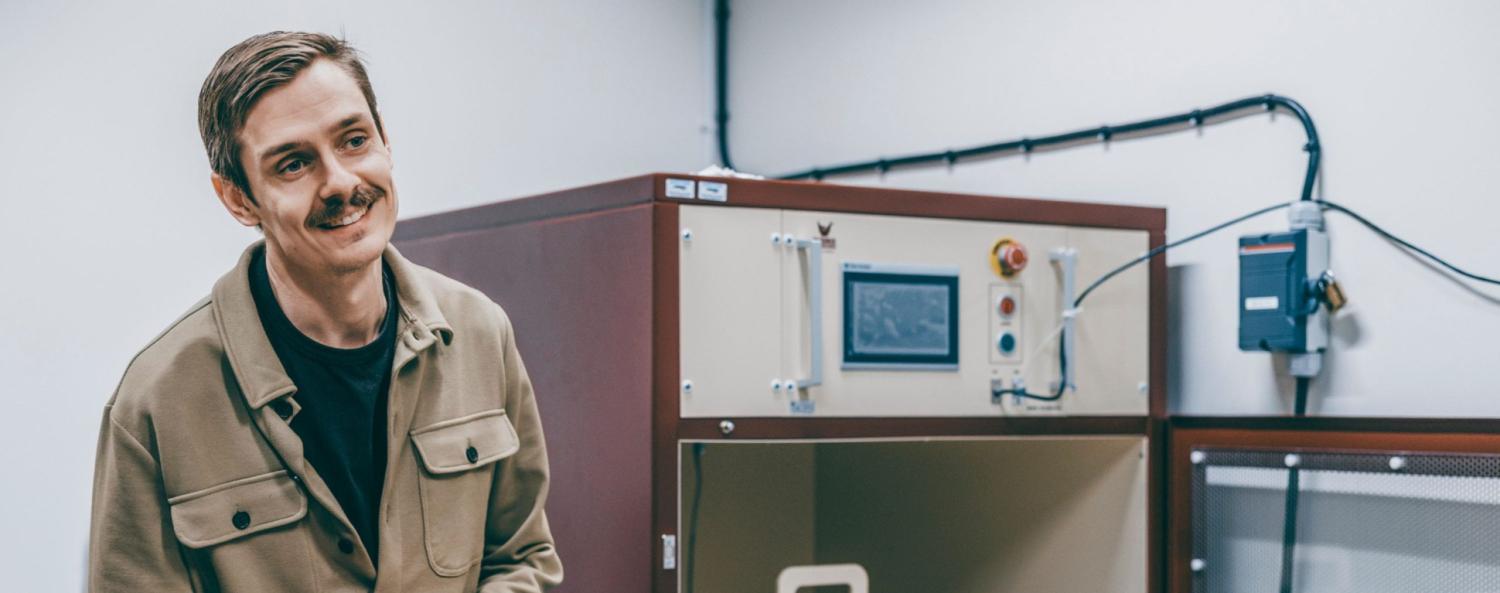New research paves the way for more sustainable fiber composite insulators in future energy systems
The electrification of society is progressing at a rapid pace. At the same time, certain aspects of this development have remained in the shadows—such as the electrical strength of fiber composite materials. Karl Arvidsson, a PhD student at Luleå University of Technology, wants to change that. Through his research, he aims to increase understanding of how fiber composite insulators can be made more sustainable and efficient.

The electrification of society is progressing at a rapid pace. At the same time, certain aspects of this development have remained in the shadows—such as the electrical strength of fiber composite materials. Karl Arvidsson, a PhD student at Luleå University of Technology, wants to change that. Through his research, he aims to increase understanding of how fiber composite insulators can be made more sustainable and efficient.
– There is a great need to understand what affects the electrical strength of fiber composite insulators. Previous research on electrical strength has primarily focused on traditional materials, while the composites industry has prioritized mechanical properties. Now, with increased electrification, it is becoming more important to bridge this knowledge gap, says Karl Arvidsson.
Electrical strength refers to a material’s insulating capability—how much electrical voltage it can withstand before it loses its insulating properties and starts to conduct electricity.
– For fiber composites, it is crucial to understand how the material’s structure influences its electrical strength. The composition of different materials and how well they work together can have a significant impact on an insulator’s performance and lifespan.
Research in Collaboration with Industry
Karl Arvidsson’s research is conducted in collaboration with Hitachi Energy, one of the world’s leading companies in power transmission and energy solutions. Having industry as a partner is a major advantage. The fact that the collaboration also involves Hitachi Energy’s local division in Öjebyn—part of SWE-CIC—where an established partnership with Luleå University of Technology already exists, is another key benefit, according to Karl.
– Having an industry partner that can provide insight into real-world challenges is incredibly valuable. My research is independent, but by receiving input from Hitachi Energy, I can ensure that it remains relevant and actually addresses the problems the industry faces.
The hope is that his research will contribute to the development of more sustainable composite insulators.
– If we understand what affects electrical strength, we can test new, more sustainable materials more quickly and cost-effectively, finding the best solutions. This could also accelerate the transition to more environmentally friendly alternatives in the energy sector.
But for Karl, research is also driven by a personal motivation.
– I find it exciting to dive into questions that no one has really answered before. At the same time, it feels meaningful to contribute to the green transition and electrification by helping the industry use more sustainable materials in the future.
New High-Voltage Testing Equipment to Drive Research Forward
As the research project began, Karl Arvidsson and his research team at Luleå University of Technology invested in new testing equipment to analyze the electrical strength of various materials.
– We now have a test machine that can handle high voltages up to 100 kilovolts and analyze how different materials react. What makes this equipment unique is that it can operate up to 100 kilovolts without requiring a large high-voltage lab. We can conduct tests in a standard laboratory without compromising safety.
Having access to this type of testing capability allows the research to progress faster, enabling more experiments and better analysis.
A Research Field with a Promising Future
Karl Arvidsson has now been conducting research for about a year and has three to four years left before the project is completed. But he already sees great potential in the field.
– Electrification means that we will need new material solutions, and fiber composites could be a key. But to take that step, we need to understand how they function electrically. I hope my research can help us get there faster.


